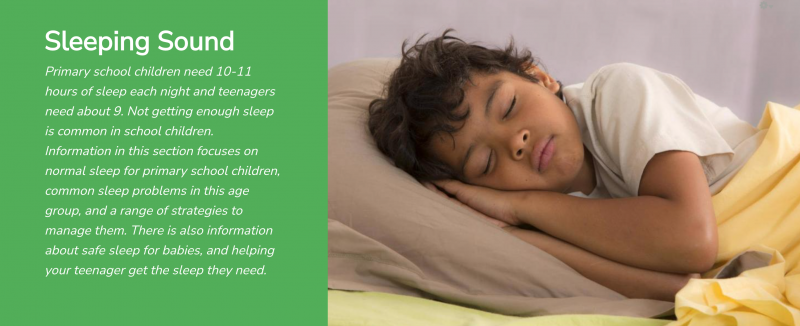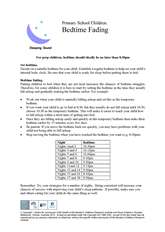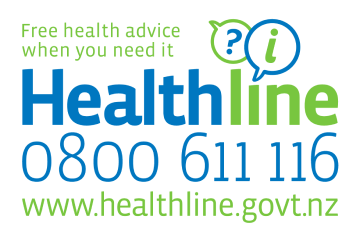Bedtime Fading For Managing Sleep Problems
Bedtime Fading For Managing Sleep Problems
Putting children to bed when they are not tired increases the chances of bedtime struggles. Therefore, for some children it is best to start by setting the bedtime at the time they usually fall asleep and gradually making the bedtime earlier.
Key points about bedtime fading
- for children beginning school, bedtime should ideally be no later than 8.30pm
- putting children to bed when they are not tired increases the chances of bedtime struggles
- work out when your child is naturally falling asleep and set this as the temporary bedtime
- try your strategies for a number of nights
- being consistent will increase your chances of success with improving your child's sleep patterns
This page is about sleep in primary school children. It's part of a whole section on sleeping sound.
When is a good bedtime for my child?
For children beginning school, bedtime should ideally be no later than 8.30pm.
Decide on a suitable bedtime for your child. Establish a regular bedtime to help set your child's internal body clock. Be sure that your child is ready for sleep before putting them to bed.
What is bedtime fading?
Putting children to bed when they are not tired increases the chances of bedtime struggles. Therefore, for some children it is best to start by setting the bedtime at the time they usually fall asleep and gradually making the bedtime earlier. For example:
Work out when your child is naturally falling asleep and set this as the temporary bedtime.
What does a temporary bedtime mean?
Being consistent will increase your chances of success with improving your child's sleep patterns.
If you want your child to go to bed at 8:30pm, but they usually do not fall asleep until 10:30pm, choose 10:30pm as the temporary bedtime. This will make it easier to teach your child how to fall asleep within a short time of getting into bed.
Once they are falling asleep easily and quickly at this temporary bedtime then make their bedtime earlier by 15 minutes every few days. Be patient - if you move the bedtime back too quickly, you may have problems with your child not being able to fall asleep.
Stop moving the bedtime when you have reached the bedtime you prefer (for example, 8:30pm).
Remember to try your strategies for a number of nights. Being consistent will increase your chances of success with improving your child's sleep patterns. If possible, make sure you and others caring for your child do the same thing as well.
Example of bedtime fading with temporary bedtimes
Here is an example of how bedtime fading could work over a number of nights to reach a new preferred bedtime:
- Nights 1 and 2 - temporary bedtime 10:30pm
- Nights 3 and 4 - temporary bedtime 10:15pm
- Nights 5 and 6 - temporary bedtime 10:00pm
- Nights 7 and 8 - temporary bedtime 9:45pm
- Nights 9 and 10 - temporary bedtime 9:30pm
- Nights 11 and 12 - temporary bedtime 9:15pm
- Nights 13 and 14 - temporary bedtime 9:00pm
- Nights 15 and 16 - temporary bedtime 8:45pm
- Nights 17 and 18 - new preferred bedtime 8:30pm
See more KidsHealth content on sleeping sound
This page last reviewed 16 March 2023.
Do you have any feedback for KidsHealth?
If you have any feedback about the KidsHealth website, or have a suggestion for new content, please get in touch with us.
Email us now

